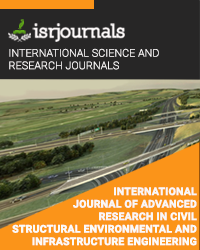analysis-of-treatment-of-crude-oil-polluted-water-at-tondairpet-north-chennai
M.Kishore,M.Arunan
Published in International Journal of Advanced Research in Civil,Structural,Environmental and Infrastructure Engineering and Developing
ISSN: 2320-723X Impact Factor:1.7 Volume:3 Issue:1 Year: 21 March,2017 Pages:447-452

Abstract
Oil spills in the sea and groundwater are one of the most common hazards to the environment. Leakages from pipelines, oil wells, underground storage tanks of gas stations, improper disposal of petroleum wastes and stranded oil spills are the major sources of surface and groundwater contamination. There cleaning process is rushed upon because of its ill-effects. The effects are even more harmful to people if the spill happens from an underground pipeline and contaminates ground water. A leak was observed from one of the pipelines that transport crude from Chennai Port to several refineries located in North Chennai. The crude oil in the ground water has to be removed from the water in a way to assure safe usage of groundwater by the residents of north Chennai. The main aspect is to analyse the treatment of crude oil mixed water by freezing methods. By using the difference in density of the water and oil, large amounts of oil content can be removed. The main goal of this project is analyse crude oil polluted water and to develop and design a prototype model which caters a procedure to treat crude oil contaminated water.
Kewords
Crude oil , Leakage, Freezing Method, groundwater
Reference
I., Singsaas, M. Reed, P.S. Daling 2000. SPE Paper 61117, presented at the SPE int. conf. on health, safety and the environment in oil and gas exploration and production, Stavanger, (Norway), B. Novales, P. Papineau, A. Sire, M.A.V. Axelos, Characterisation of emulsions and suspensions by video image analysis, Colloids Surfaces A, Physicochem. Eng. Aspects 221 (2003) 81–89. G. He, G. Chen, Separation of water and oil from water-in-oil emulsion by freeze/thaw method, Separation Purif. Technol. 31 (2003) 83– 89. Gray, N.F., (1997), ‘‘Drinking water quality; problems and solutions’’. John Wiley and Sons. Macgill., (2000), Macgill Environmental Research Laboratory(MERL)-Analysis Manual. Turner, S., (2000), ‘‘Will There Be Enough Water In The Next Century?’’ Encarta Yearbook, February 2000. World Health Organization., (2010), Guidelines for Drinking Water. Wagstaff, E. C. (1999). In Appropriate Technology for Oil Spill Management. IUPAC. Viswanathan, B. (2006). “Petroleum”. Introduction to Energy Sources. Retrieved 17 Ways to Clean Up the Gulf Oil Spill. (n.d.). Retrieved January 26, 2011, from CNBC.com: www.cnbc.com/id/37593652/17_ways_to_clean_up_the_gulf_oil_spill?slide=1 What is Peat Moss. (2004). Retrieved January 25, 2011, from The Heart of New England: www.theheartofnewengland.com/garden/peat-moss.html

